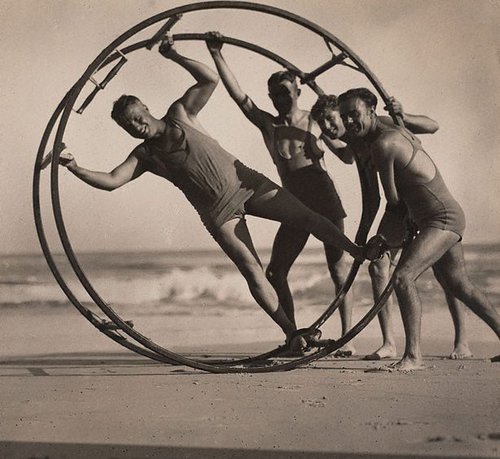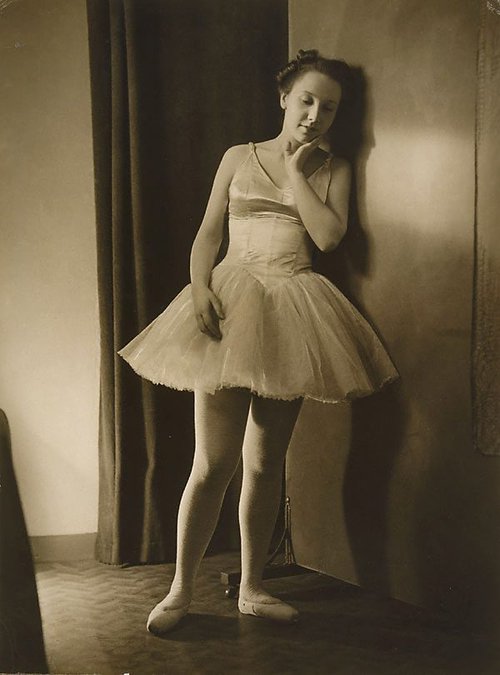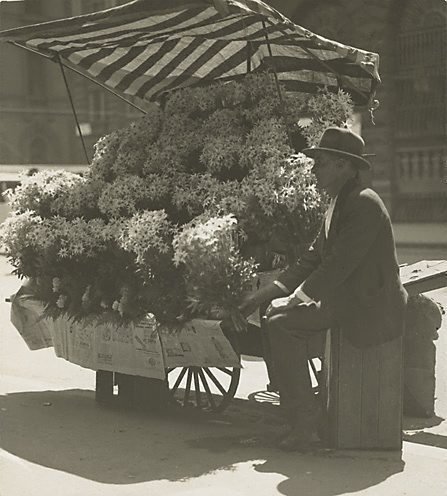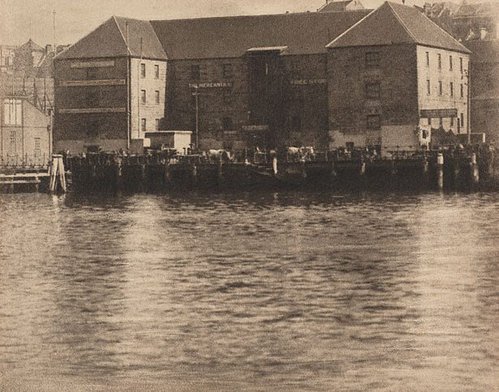Title
Faithful submission
circa 1918
Artist
-
Details
- Alternative title
- A Sydney waterfront, Pyrmont
- Date
- circa 1918
- Media category
- Photograph
- Materials used
- bromoil photograph
- Dimensions
- 14.3 x 32.4 cm image/sheet; 23.2 x 39.9 cm card
- Signature & date
Signed l.r. card, pencil "H Cazneaux". Not dated.
- Credit
- Gift of the Cazneaux family 1975
- Location
- Not on display
- Accession number
- 141.1975
- Copyright
- Artist information
-
Harold Cazneaux
Works in the collection
- Share
-
-
About
Work horses feature in a number of Cazneaux’s inner-city images shot during the first two decades of the twentieth century. This photograph was captured during a fire on Prymont wharf, which the crowds in the mid-ground have gathered to see. Pictoralists such as Cazneaux were attracted clouds, smoke, steam and mist because of haze’s ability to obscure sharp lines and generate a soft, painterly aesthetic. Cazneaux has adjusted the tonal range of his scene during the printing stage, enhancing this soft ethereal quality 1. A bromoil print is created when a gelatin silver photograph was bleached and fixed, then soaked in water. A greasy ink was then applied and gradually built up to the required density 2.
Harold Cazneaux was born in Wellington, New Zealand in 1878. His parents, Pierce Mott Cazneau and Emma Florence (née Bentley) worked in commercial studios in New Zealand before returning to settle permanently in Adelaide during the early 1890s. At the age of 18 Cazneaux went to work alongside his father at Hammer & Co studio as a retoucher. He moved to Sydney in 1904 to join the larger portrait firm, Freeman’s quickly ascending to the position of ‘chief operator’ (as camera portraitists were known). Studio work was highly formulaic, with little scope for creativity. Cazneaux used his time walking to and from work to experiment with pictorialist aesthetics 1. The Photographic Society of New South Wales organised an exhibition of Cazneaux’s photographs in 1909, the first such solo exhibition of its kind in Australia. In 1916 he and fellow pictorialist photographer, Cecil Bostock founded the Sydney Camera Circle. The group was particularly interested in the how pictorialism could be adapted to and extended within an Australian context. The mechanised, standardised and frenetic pace of Freeman’s increasingly took its toll on Cazneaux’s creativity and health, and he resigned in 1917. He moved with his wife and daughters to the Sydney suburb of Roseville, and in 1920 he was employed as the official photographer for The Home magazine. This new position let him work in a varied indoor and outdoor environments. In 1938 Cazneaux was awarded an Honorary Fellow of the Royal Photographic Society of London. He continued to work until his death in 1953.
1. Miller S 2007, ‘Chapter 4: Australian Pictorialism’ in, ‘Photography: Art Gallery of New South Wales Collection Handbook’, Art Gallery of New South Wales, Sydney p 72
2. Baldwin G 1991, ‘Looking at photographs: a guide to technical terms’, J Paul Getty Museum, Los Angeles pp 11-12
3. Newton G 1988, ‘Shades of Light: Photography and Australia 1839-1988’, Australian National Gallery, Canberra p 85 -
Exhibition history
Shown in 1 exhibition
Harold Cazneaux, Art Gallery of New South Wales, Sydney, 22 Dec 1989–11 Mar 1990




